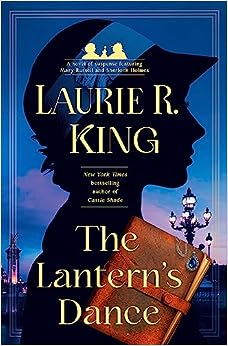 The Lantern's Dance (Mary Russell and Sherlock Holmes, #18) by Laurie R. King
The Lantern's Dance (Mary Russell and Sherlock Holmes, #18) by Laurie R. King Format: eARC
Source: supplied by publisher via Edelweiss, supplied by publisher via NetGalley
Formats available: hardcover, ebook, audiobook
Genres: historical fiction, historical mystery, mystery
Series: Mary Russell and Sherlock Holmes #18
Pages: 300
Published by Bantam on February 13, 2024
Purchasing Info: Author's Website, Publisher's Website, Amazon, Barnes & Noble, Kobo, Bookshop.org, Better World Books
Goodreads
Mary Russell and Sherlock Holmes, hoping for a respite in the French countryside, are instead caught up in a case that turns both bewildering and intensely personal.
After their recent adventures in Transylvania, Russell and Holmes look forward to spending time with Holmes' son, the famous artist Damian Adler, and his family. But when they arrive at Damian’s house, they discover that the Adlers have fled from a mysterious threat.
Holmes rushes after Damian while Russell, slowed down by a recent injury, stays behind to search the empty house. In Damian’s studio, she discovers four crates packed with memorabilia related to Holmes’ grand-uncle, the artist Horace Vernet. It’s an odd mix of treasures and clutter, including a tarnished silver lamp with a rotating an antique yet sophisticated form of zoetrope, fitted with strips of paper whose images dance with the lantern’s spin.
In the same crate is an old journal written in a nearly impenetrable code. Intrigued, Russell sets about deciphering the intricate cryptograph, slowly realizing that each entry is built around an image—the first of which is a child, bundled into a carriage by an abductor, watching her mother recede from view.
Russell is troubled, then entranced, but each entry she decodes brings more questions. Who is the young woman who created this elaborate puzzle? What does she have to do with Damian, or the Vernets—or the threat hovering over the house?
The secrets of the past appear to be reaching into the present. And it seems increasingly urgent that Russell figure out how the journal and lantern are related to Damian—and possibly to Sherlock Holmes himself.
Could there be things about his own history that even the master detective does not perceive?
My Review:
As Holmes himself once said, “Art in the blood is liable to take the strangest forms,” but as this 18th book in the continuing chronicles of Sherlock Holmes and his apprentice-turned-wife Mary Russell opens, Holmes is considerably more worried about the form that blood might take spilled from his son’s veins on the floor of the French cottage where Holmes adult son, Damien Adler, his young daughter Estelle and his wife-to-be Dr. Aileen Henning have set up house and home in Damien’s inheritance from his mother Irene Adler.
Someone, a man Adler described as a ‘lascar’ broke into his home in the middle of the night, kukri in hand, to do who knows what damage or cause who knows what type of mayhem.
Adler does his best to convince himself it was all a prank gone wrong. But Holmes, with too many enemies still lurking in his shady past and even his more circumspect present, is not nearly so sanguine about the whole thing. There are, after all, plenty of criminals who would like to put the squeeze on Sherlock Holmes by threatening his son and his granddaughter, and most likely even more powers and potentates who would be interested in having some leverage against that puller of the British Empire’s strings and minder of its webs, Mycroft Holmes, by kidnapping his nephew and great-niece.
Holmes’ primary concern, desire and dilemma, all in one gordian knot of emotions he is reluctant in the extreme to untangle, is to get Damien, Aileen and Estelle somewhere safe so that he can run the meager clues about the break in and its elusive perpetrator to ground. Possibly to put them in that ground if necessary.
Damien wants to continue his work as an up-and-coming surrealist artist – AND he wants his father to explain what the hell is going on. In other words, Damien Adler wants to be treated as the adult he is as well as protect his family.
While Russell is, at least at the outset, a bit of a ‘fifth wheel’ in this family drama of which she is more of an appendage that a central part. Unfortunately for her, an appendage with a sprained ankle, hobbling around on crutches, in the house where her predecessor, the famous and famously beautiful Irene Adler, once ruled. If her ankle wasn’t already making her miserable enough, this entire situation has more than enough undercurrents to discomfit even Russell.
So the dust on the initial break in settles with Damien in Paris, Holmes following behind to check for traps, tagalongs and any possible gathering of confederates, while Russell is left behind in Irene Adler’s old house, going through the detritus of codes long left unbroken and old family secrets. Only to discover that the reason for the break in has been hidden in plain sight, and that too many of the truths that Sherlock Holmes has believed all his life were lies all along.
And that more of that art in the blood that his son received in full measure from his mother’s well-known artistic family bore other, more mysterious fruit much closer to its source.
Escape Rating A: This one begins slowly, as Russell languishes – a bit – alone in the countryside while Holmes hares off to Paris and points beyond. At first, it felt like the story was creeping along, much as Russell is doing with her crutches. But Russell’s temporary infirmity forces her to sit still – something that chafes at her no end.
But that stillness – and the lack of ability to rush about after Holmes – forces her to take the time to explore her briefly confined circumstances. And thereby, quite literally, hangs this tale.
Also, and fascinatingly so, as Russell’s leg gets better, as she graduates from crutches to a cane to walking unaided, as she picks up her pace the story increases its pace in tandem. By the time she is able to unravel all of the mysteries, she is searching Paris on foot, chasing down leads and putting the pieces together at her – and her story’s – usual brisk pace.
So initially, while Holmes is the active partner and Russell is stuck in place, he’s actually spinning his wheels, trying to safeguard someone who refuses to obey orders, looking over his shoulder at every moment, and always operating at an information deficit as he’s forced to react to circumstances rather than think first and then act.
Russell has that luxury. She’s stuck, she has time to think, and plenty to think about. While Holmes and the rest of the family are running, she’s questioning the locals and exploring the house, where she finds clues that lead her to the true heart of the mystery – and to its bittersweet conclusion.
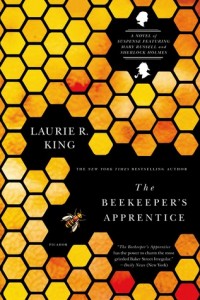 In the end, I did love this entry in the series, although it took me a bit to get there because of that slow start. But now that I’ve finished, I’m left with the impression that this is more of a family story than it is the kind of mystery that has more often been featured in this series, and in the Holmes canon and Russell Kanon in general. On this, the thirtieth anniversary of the publication of The Beekeeper’s Apprentice – the story where Russell nearly tripped over Holmes on the Sussex Downs – it feels right that we go back to, not their beginning, but rather to Holmes’ own beginning, and get a much clearer picture of where he came from and the forces that made him – and Mycroft for that matter – the men they became.
In the end, I did love this entry in the series, although it took me a bit to get there because of that slow start. But now that I’ve finished, I’m left with the impression that this is more of a family story than it is the kind of mystery that has more often been featured in this series, and in the Holmes canon and Russell Kanon in general. On this, the thirtieth anniversary of the publication of The Beekeeper’s Apprentice – the story where Russell nearly tripped over Holmes on the Sussex Downs – it feels right that we go back to, not their beginning, but rather to Holmes’ own beginning, and get a much clearer picture of where he came from and the forces that made him – and Mycroft for that matter – the men they became.
In other words, The Lantern’s Dance feels like a story that will be utterly riveting for fans of the series, but would not make a good place for a newcomer to start. If you have not yet had the pleasure of Mary Russell’s acquaintance, I highly recommend that you begin at the beginning, with The Beekeeper’s Apprentice, and settle in for a long and delightful read.

 Remember Me (Ravenswood, #2) by
Remember Me (Ravenswood, #2) by  A scandal that touched Lucas every bit as closely as it did Pippa. But eavesdroppers seldom hear anything to their credit, and that was the case here. He owes her an explanation AND an abject apology. But it is water very much under the bridge at this point. That she let his words blight the next four years of her life isn’t ALL on him. Although she still doesn’t owe him the time of day.
A scandal that touched Lucas every bit as closely as it did Pippa. But eavesdroppers seldom hear anything to their credit, and that was the case here. He owes her an explanation AND an abject apology. But it is water very much under the bridge at this point. That she let his words blight the next four years of her life isn’t ALL on him. Although she still doesn’t owe him the time of day. Your reading mileage may definitely vary. In fact, I hope it does because I think a LOT of people are going to love this book. I’m just not one of them although I certainly expected to be.
Your reading mileage may definitely vary. In fact, I hope it does because I think a LOT of people are going to love this book. I’m just not one of them although I certainly expected to be.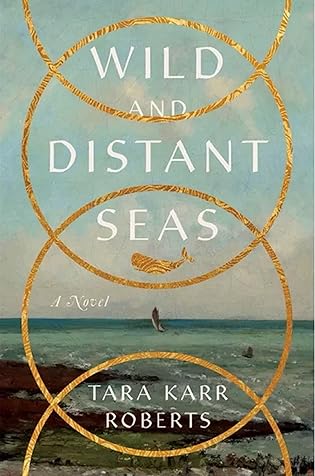 Wild and Distant Seas by
Wild and Distant Seas by  Escape Rating B: Wild and Distant Seas is a story that is constantly in dialog with its predecessor,
Escape Rating B: Wild and Distant Seas is a story that is constantly in dialog with its predecessor, 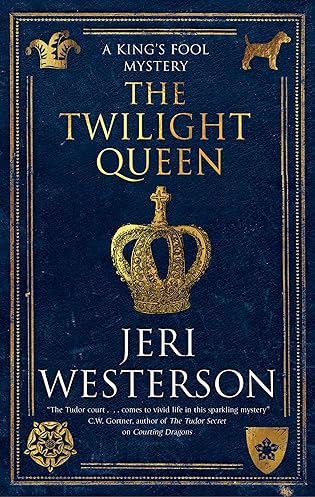 The Twilight Queen (A King's Fool mystery, 2) by
The Twilight Queen (A King's Fool mystery, 2) by  That his story – or rather the reinterpretation of his story through the characters of his six wives – has been reimagined yet again in the Tony Award winning Broadway play,
That his story – or rather the reinterpretation of his story through the characters of his six wives – has been reimagined yet again in the Tony Award winning Broadway play, 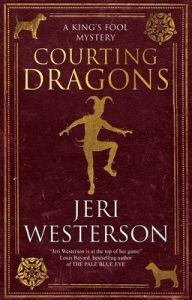 Escape Rating B: Genre blends such as historical mystery are always a balancing act – much like Will Somers position is a balancing act between making his sovereign laugh, forcing his master to stop and think – and keeping both his job and his head.
Escape Rating B: Genre blends such as historical mystery are always a balancing act – much like Will Somers position is a balancing act between making his sovereign laugh, forcing his master to stop and think – and keeping both his job and his head.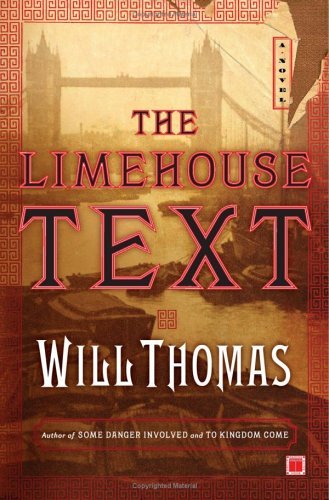 The Limehouse Text (Barker & Llewelyn, #3) by
The Limehouse Text (Barker & Llewelyn, #3) by 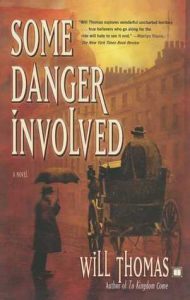 I was feeling in a bit of a murder-y mood this week – reading-wise at least. Which seems entirely fitting as we’re ‘killing’ 2023 this weekend and ringing in 2024.
I was feeling in a bit of a murder-y mood this week – reading-wise at least. Which seems entirely fitting as we’re ‘killing’ 2023 this weekend and ringing in 2024. 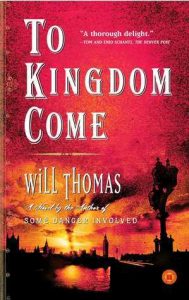 Escape Rating A+: One thing drove me utterly bananas during my reading of The Limehouse Text. I had the vague impression, not that I’d read this before, but that the Jeremy Brett Sherlock Holmes series had also tackled a story set in Limehouse – London’s Victorian version of Chinatown – but couldn’t track down precisely which story. I think it may have been
Escape Rating A+: One thing drove me utterly bananas during my reading of The Limehouse Text. I had the vague impression, not that I’d read this before, but that the Jeremy Brett Sherlock Holmes series had also tackled a story set in Limehouse – London’s Victorian version of Chinatown – but couldn’t track down precisely which story. I think it may have been 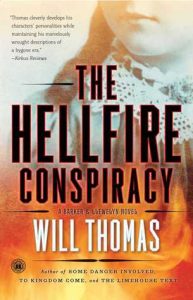 In the end, this is a clever, convoluted mystery, solved but not truly resolved by fascinating characters, steeped in a culture and a perspective that was not treated with any kind of respect in its time and about which stereotypes promoted during this period still linger. The reader is inexorably drawn in by the mystery and the setting, and left with both the satisfaction of at least some just desserts being served – as a mystery should – while still reeling from the marvelously presented microcosm of all the reasons why ‘colonialism’ is such a disgustingly dirty word in so many places around the globe to this very day.
In the end, this is a clever, convoluted mystery, solved but not truly resolved by fascinating characters, steeped in a culture and a perspective that was not treated with any kind of respect in its time and about which stereotypes promoted during this period still linger. The reader is inexorably drawn in by the mystery and the setting, and left with both the satisfaction of at least some just desserts being served – as a mystery should – while still reeling from the marvelously presented microcosm of all the reasons why ‘colonialism’ is such a disgustingly dirty word in so many places around the globe to this very day.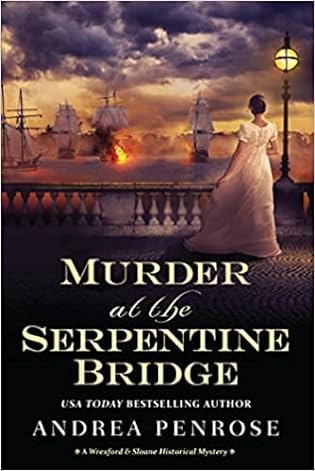 Murder at the Serpentine Bridge (Wrexford & Sloane, #6) by
Murder at the Serpentine Bridge (Wrexford & Sloane, #6) by  As the previous book in this series,
As the previous book in this series, 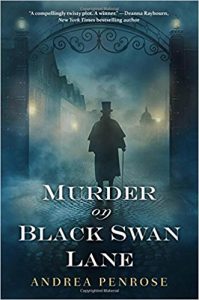 Escape Rating A: This was the right book at the right time, and I clearly waited enough time after
Escape Rating A: This was the right book at the right time, and I clearly waited enough time after  Meanwhile, everyone is chasing everyone else’s tails into danger, as the government’s intelligence services are unwilling to let the right hand know what the left hand is doing (shades of yesterday’s book) and everyone is unwittingly keeping vital clues from even their nearest and dearest.
Meanwhile, everyone is chasing everyone else’s tails into danger, as the government’s intelligence services are unwilling to let the right hand know what the left hand is doing (shades of yesterday’s book) and everyone is unwittingly keeping vital clues from even their nearest and dearest. The Butterfly Collector by
The Butterfly Collector by 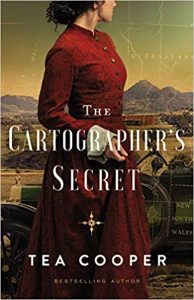 Escape Rating B: I have to say that I ended up with mixed feelings all over the place while listening to and reading The Butterfly Collector. In the end, the 1922 story carried me through, but it’s the 1868 story that held the most bone-chilling horrors. Real-life horror, like revenge, is compellingly served ice cold – and the horrors of this story, based on real historical events – had plenty of chills to deliver.
Escape Rating B: I have to say that I ended up with mixed feelings all over the place while listening to and reading The Butterfly Collector. In the end, the 1922 story carried me through, but it’s the 1868 story that held the most bone-chilling horrors. Real-life horror, like revenge, is compellingly served ice cold – and the horrors of this story, based on real historical events – had plenty of chills to deliver.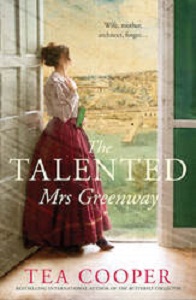 Once I switched to text it all got better, and I was able to finally be captured by the increasingly frenetic pace of the mystery of it all. Not just a terrible crime, but decades of a profitable series of terrible crimes come to light and sticks a knife into Verity’s heart AND her perceptions of her family’s history in a way that makes the whole story both sing and sting at the same time.
Once I switched to text it all got better, and I was able to finally be captured by the increasingly frenetic pace of the mystery of it all. Not just a terrible crime, but decades of a profitable series of terrible crimes come to light and sticks a knife into Verity’s heart AND her perceptions of her family’s history in a way that makes the whole story both sing and sting at the same time.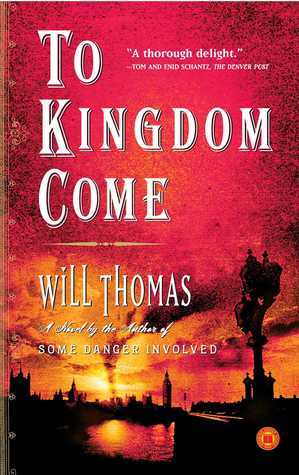 To Kingdom Come (Barker & Llewelyn, #2) by
To Kingdom Come (Barker & Llewelyn, #2) by 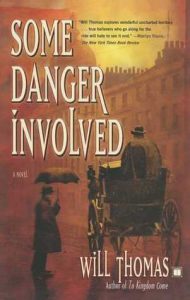 After the events of the first marvelous book in this series,
After the events of the first marvelous book in this series, 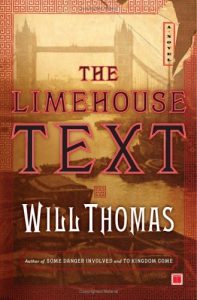 What kept me glued to my seat (as this turned out to be a one-sitting/one-evening read) was the way that it dove head-first both into the heart of its point-of-view character Thomas Llewelyn and into the hearts and motivations of the Irish Republican Brotherhood faction members, and the difficulty that Llewelyn had separating himself from them and his sympathy for their cause even as he decried their methods and worked to bring them down, doing his best to keep them all from being blown “to kingdom come”.
What kept me glued to my seat (as this turned out to be a one-sitting/one-evening read) was the way that it dove head-first both into the heart of its point-of-view character Thomas Llewelyn and into the hearts and motivations of the Irish Republican Brotherhood faction members, and the difficulty that Llewelyn had separating himself from them and his sympathy for their cause even as he decried their methods and worked to bring them down, doing his best to keep them all from being blown “to kingdom come”.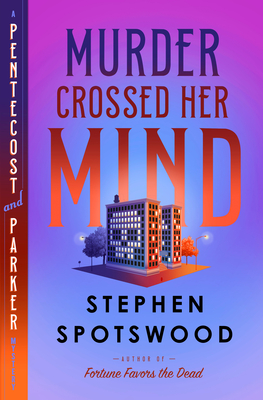 Murder Crossed Her Mind (Pentecost and Parker #4) by
Murder Crossed Her Mind (Pentecost and Parker #4) by 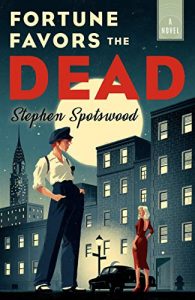 It’s still 1947 in this fourth entry in the
It’s still 1947 in this fourth entry in the 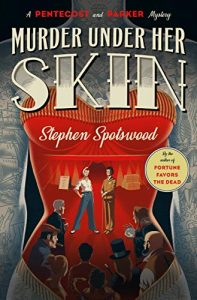 Escape Rating A++: Murder Crossed Her Mind was an actual, literally, honest-to-goodness one sitting read for me. I started it thinking I’d read for an hour or so before bed, and then just stayed there reading. And stayed. And STAYED. Until it was done nearly four hours later. Hence that A++ rating because I simply could not put this down until Pentecost and Parker knew everything and staged a great – but still slightly speculative – reveal at the end.
Escape Rating A++: Murder Crossed Her Mind was an actual, literally, honest-to-goodness one sitting read for me. I started it thinking I’d read for an hour or so before bed, and then just stayed there reading. And stayed. And STAYED. Until it was done nearly four hours later. Hence that A++ rating because I simply could not put this down until Pentecost and Parker knew everything and staged a great – but still slightly speculative – reveal at the end.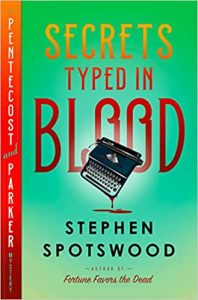 It was also a bit different because it was never about what enemies Vera might have made – because she didn’t. Instead, it was about which secret someone could least afford her to reveal, which made the investigation just that much more complicated.
It was also a bit different because it was never about what enemies Vera might have made – because she didn’t. Instead, it was about which secret someone could least afford her to reveal, which made the investigation just that much more complicated.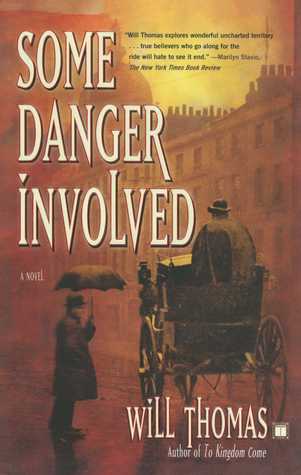 Some Danger Involved (Barker & Llewelyn, #1) by
Some Danger Involved (Barker & Llewelyn, #1) by